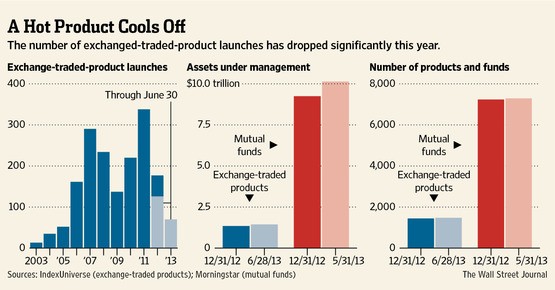Ritholtz’s rules of investing The Washington Post
Post on: 9 Июль, 2015 No Comment

Each year on the Big Picture. the blog I call home, I update my top trading rules and aphorisms. It’s a collection I have gathered over the years of my favorite trader, analyst, economist and investor viewpoints on what — and what not — to do when it comes to investing in the capital markets.
Whenever I publish a list like this, someone invariably asks: “You have been at this for 20 years (and you seem to like numbered lists), what have you learned over that time?”
Ritholtz is chief investment officer of Ritholtz Wealth Management. He is the author of “Bailout Nation” and runs a finance blog, the Big Picture. View Archive
Fair enough. You could probably cobble together my guide from what I’ve written for The Washington Post. Let me save you the trouble. Here is the first half of my dozen rules for investing. (Come back next time for the rest.)
1 Cut your losers short and let your winners run: Perhaps the best investing advice ever, its sophistication is belied by its apparent simplicity.
Letting your winners run generates all sorts of desirable outcomes: It allows compounding to occur, gives you the benefit of time and keeps your transaction costs, fees and taxes low. Since this rule does not allow you to take a quick profit for no reason (other than having one), it also forces you to develop an actual exit strategy.
Similarly, cutting your losers short forces you to be humble and intelligent. It rotates you away from the sectors and stocks that are not working. Best of all, you are forced to admit your own fallibility — crucial for all investors.
2 Avoid predictions and forecasts: Humans are very bad at guessing what the future will bring. The academic literature overwhelmingly proves this.
If you prefer anecdotal evidence, recall how many economists forecast the Great Recession (almost none), the initial reviews of the iPad (mostly panned) or even the iPhone (meh!).
For your own investing, you should ignore other people’s forecasts. And you should avoid making any yourself. Why? Because when investors make forecasts they focus more on being right than making money. They unconsciously shift their portfolio toward their predictions rather than what is occurring in the markets. This is a recipe for disaster. Consider how many people completely missed the huge rally since the March 2009 lows, mostly because of forecasts of another crash. They were rooting for their prediction, instead of spotting the opportunity.
3 Understand crowd behavior: The investor who understands the behavior of crowds has an enormous advantage over one who doesn’t. He understands that investing often involves figuring out where the crowd is going, even if it’s objectively ”wrong.” Recall Keynes’s theoretical beauty contest. where players were not trying to pick who they thought was prettiest, but rather, select who they anticipated the crowd might pick.
Investing isn’t necessarily a process of picking the “best” asset class, sector or stock, but rather, selecting what the crowd is buying. Investors sometimes forget that, most of the time, the crowd is the market. (You can take advantage of this by, as Rule 6 suggests, becoming a index investor).
The psychology of crowd behavior is such that higher prices attract more buyers — and lower prices create sellers. Fear of missing a rally is a powerful element; fear of losses is even stronger.
4 Think like a contrarian: The crowd can be fickle, overly emotional or even irrational. The contrarian learns to recognize when the crowd turns into an unruly mob. When that happens, it’s time to stop betting with the group, and take the other side of the trade — betting against the crowd.
Most people accept conventional wisdom at face value, tend toward widely accepted social mores and are uncomfortable being a lone voice of dissent. There is an evolutionary reason for this: Humans are social animals, and we have evolved to cooperate with the members of our tribe and to work with the group.
But there is a qualitative difference between what the majority of rational-thinking market participants are doing and the reflexive, panicked behavior of an unthinking mob. The true contrarian can tell the difference between a crowd and a mob, a market rally and a bubble. The tricky part is the timing.

5 Asset allocation is crucial: What is your relative weighting of stocks, bonds, real estate and commodities? In the popular finance media, this gets little attention. Yet all of the academic studies show that it’s the most important decision an investor makes. It’s far more important than stock selection, yet that’s all anyone seems to want to talk about.
As we noted last summer. “Stock picking is for fun. Asset allocation is for making money over the long haul.” The world’s greatest stock picker would have gotten shellacked in 2008; the world’s worst stock picker made a ton of money in 2009.
The weighting you select for various asset classes is a function of such factors as your age, income, risk tolerance and retirement needs. It is what serious investors focus on.
6 Are you an active or passive investor: For the equity portion of your allocation, you must answer a crucial question: Do you buy indexes and garner market-level returns, or do you pick stocks (or sectors) and time the market in an attempt to beat the indices?
Those who try to beat the market have a tough road ahead: Each year, 80 percent of professional managers fail to beat their benchmark. Of the few who do, once you take fees and costs into consideration, less than 2 percent actually hit that bogey.
If you want to beat the market, understand the long odds that are working against you. That is why for most investors, indexing is a much better bet.
In conclusion, investors need to fully understand the challenges that face them: Capital markets are about making the best probabilistic decisions using imperfect information about an unknowable future.
Sometimes you have an embarrassment of riches to select from; other times you are choosing the “least-worst“ option. Either way, you will never have perfect information that allows you to bet on a sure thing. There is no magic elixir.
Ritholtz is chief executive of FusionIQ, a quantitative research firm. He is the author of “Bailout Nation ” and runs a finance blog, the Big Picture. You can follow him on Twitter: @Ritholtz. For previous Ritholtz columns, go to washingtonpost.com/business .














